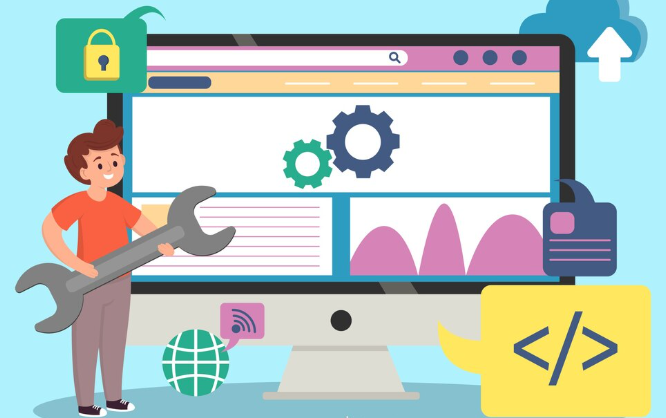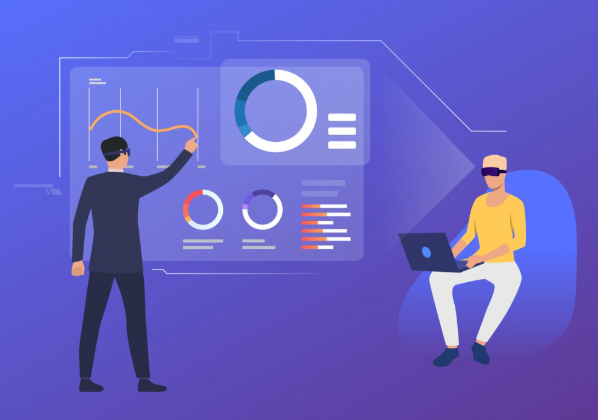Understanding No-Code Development for MVPs

What is an MVP and why no-code?
A Minimum Viable Product (MVP) is a development technique where you launch a product with just enough features to attract early-adopters and validate a product idea early on. It’s about gathering real-world feedback quickly and iteratively improving your offering based on user data, not building a perfect product from the outset. In our experience, focusing on a core set of features significantly reduces development time and costs, allowing you to test your hypothesis rapidly. A common mistake we see is trying to include every conceivable feature in the initial launch; this often leads to delays and wasted resources.
So why choose no-code for your MVP? No-code platforms empower indie hackers to bypass traditional coding, accelerating development significantly. Studies show that no-code development can reduce time-to-market by up to 80%, a crucial advantage in today’s competitive landscape. Instead of investing heavily in a development team, you can leverage user-friendly interfaces to build, test, and launch quickly. For instance, consider a simple e-commerce store: using a platform like Shopify, you can build a functional MVP with basic product listings, shopping cart, and payment gateway integration within days, whereas traditional development might take months. This speed allows for faster learning and adaptation based on user feedback, maximizing your chances of creating a successful product.
Launch Your App Today
Ready to launch? Skip the tech stress. Describe, Build, Launch in three simple steps.
BuildBenefits of using no-code for indie hackers
For indie hackers, no-code platforms offer a compelling alternative to traditional software development. In our experience, the most significant benefit is the dramatic reduction in upfront costs. Eliminating the need for expensive developers and lengthy development cycles frees up capital for marketing, customer acquisition, and iterative product improvement. This allows for rapid experimentation and faster time-to-market – crucial for validating your MVP’s core assumptions.
Furthermore, the ease of use inherent in no-code tools empowers solo founders to build and iterate on their products independently. This control fosters a deep understanding of the product’s inner workings, facilitating quicker problem-solving and efficient adjustments based on user feedback. A common mistake we see is underestimating the power of rapid iteration; no-code empowers this crucial aspect of MVP development. For example, we worked with a client who used Webflow to launch their MVP in a matter of weeks, validating their core concept and securing seed funding before they even considered hiring a development team. This agile approach is simply unattainable using traditional methods for many budget-conscious indie hackers.
Choosing the right no-code tool for your project
Selecting the ideal no-code platform hinges on a careful assessment of your MVP’s specific requirements. In our experience, focusing solely on the “coolest” tool often leads to disappointment. Instead, prioritize features crucial to your product’s core functionality. For instance, if real-time data synchronization is critical, a platform lacking robust database integration, like a simple website builder, will prove inadequate. Conversely, if your MVP is a simple landing page with email capture, a complex, enterprise-grade platform would be overkill and unnecessarily expensive.
Consider your technical skills and team expertise. Some platforms boast a steeper learning curve than others. While Bubble offers unparalleled flexibility, it demands significant time investment to master. Conversely, platforms like Webflow excel with user-friendly interfaces, ideal for those prioritizing rapid prototyping. A common mistake we see is underestimating the importance of long-term scalability. Will your chosen no-code solution seamlessly adapt as your user base grows? Before committing, investigate each platform’s pricing tiers and scaling capabilities. Thorough research, including hands-on trials and community feedback, will dramatically increase your chances of selecting the perfect no-code tool for your MVP’s journey.
Top 10 No-Code Tools: A Detailed Review

Tool #1: Webflow (Website Builder)
Webflow stands out as a powerful no-code website builder ideal for MVP launches. Its visual editor allows for rapid prototyping and iteration, crucial for indie hackers constantly testing and refining their product. In our experience, building a functional landing page or simple e-commerce site takes significantly less time than with traditional coding methods. A common mistake we see is underestimating Webflow’s capabilities; it’s not just for static sites – it handles complex interactions and animations surprisingly well.
For instance, we recently used Webflow to build a client’s MVP showcasing a new SaaS product. The ability to integrate with various third-party services like payment gateways and email marketing platforms proved invaluable. While the free plan has limitations, the paid plans offer excellent value, particularly considering the time saved compared to hiring a developer. Remember to leverage Webflow’s extensive template library to jumpstart your design process; however, don’t be afraid to customize heavily to create a truly unique brand identity. Ultimately, Webflow’s blend of ease of use and advanced features makes it a top choice for bootstrapping your MVP.
Tool #2: Softr (No-Code Web App Builder)
Softr excels as a no-code web app builder directly integrating with Airtable. In our experience, this combination is incredibly powerful for quickly building functional MVPs. We’ve seen users leverage Softr to transform simple Airtable databases into fully functional, user-friendly applications in a fraction of the time traditional coding would require. A common pitfall is underestimating the power of Airtable’s data structuring capabilities; carefully planning your Airtable schema before building in Softr is crucial for a smooth development process.
For example, we recently used Softr to build a client-facing inventory management system. By leveraging Airtable’s pre-built features and Softr’s intuitive interface, we created a visually appealing and user-friendly app in under a week. Key features like user authentication, customizable dashboards, and seamless data synchronization were effortlessly implemented. While the free plan has limitations, the affordable paid plans offer robust functionality, making it a cost-effective solution for bootstrapping startups. Compared to other no-code solutions, Softr stands out for its strong Airtable integration, resulting in a more streamlined development workflow and a faster time to market for your MVP.
Tool #3: Bubble (Powerful No-Code Platform)
Bubble is a powerful visual programming platform that allows you to build complex web applications without writing a single line of code. In our experience, its drag-and-drop interface makes prototyping incredibly fast, ideal for rapidly iterating on your MVP. However, the learning curve can be steeper than other no-code tools, demanding a commitment to mastering its unique workflow. A common mistake we see is underestimating the complexity of managing data within Bubble; proper planning and data structuring are crucial for scalability.
For example, we successfully built a fully functional marketplace application using Bubble, leveraging its robust database features and integration options. However, managing user authentication and complex workflows required a deeper understanding of the platform’s capabilities. Compared to simpler tools like Webflow, Bubble offers significantly more flexibility but at the cost of a more involved development process. Consider Bubble if you need a high degree of customization and are prepared to invest the time in learning its intricacies. Its pricing model, starting with a free plan and scaling up with your needs, also makes it accessible for bootstrapped projects.
Tool #4: Glide (Spreadsheet to App)
Glide shines as a rapid prototyping tool, transforming simple Google Sheets into fully functional mobile apps. In our experience, this is invaluable for MVP development. The ease of connecting a spreadsheet directly to a visually appealing app is incredibly efficient, eliminating the need for complex coding. A common mistake we see is underestimating the power of Glide’s data editing features; directly updating your sheet allows for instant app updates, perfect for iterative development.
Glide offers various plan options, from free to paid, catering to different project needs and scales. Consider the limitations of the free tier; for instance, custom branding options are often restricted. We found the paid plans offered excellent value, especially considering the time saved compared to traditional app development. For example, a client recently used Glide to launch a simple inventory management app for their small business in under a week, a process that would have taken months using traditional methods. Ultimately, Glide’s simplicity and speed make it a powerful contender for indie hackers seeking a fast and affordable route to market.
Tool #5: Zapier (Automation Tool)
Zapier is a powerful automation tool that shines in connecting different apps without any coding. In our experience, it’s invaluable for MVP development, streamlining workflows that would otherwise consume precious time. For example, imagine automatically adding new subscribers from your Mailchimp list to your Airtable database, updating your CRM every time a sale is made on your Shopify store, or triggering a Slack notification when a new support ticket arrives. These are all tasks easily handled by Zapier’s intuitive interface, saving you hours of manual work.
A common mistake we see is underestimating Zapier’s capacity. While simple automations (“Zaps”) are easy to set up, more complex workflows require careful planning and testing. Zapier offers a generous free plan, perfect for testing the waters and building simpler integrations. However, for more extensive automation involving numerous apps or high-volume data transfers, upgrading to a paid plan is essential. Consider factors like the number of Zaps, tasks per month, and the complexity of your integrations when deciding which plan best fits your needs. Remember, the time saved through automation is often a better investment than the cost of the premium plan.
Tool #6: Airtable (Database & Spreadsheet)
Airtable’s power lies in its unique blend of spreadsheet simplicity and database functionality. In our experience, this makes it ideal for MVP development, allowing you to manage complex data without needing coding skills. Unlike traditional spreadsheets, Airtable offers robust features like relational databases, allowing you to link different tables seamlessly. For example, you could link a “Customers” table to an “Orders” table, instantly providing a complete customer order history. This eliminates the need for complex database setups often associated with traditional development.
A common mistake we see is underestimating Airtable’s automation capabilities. Leveraging its scripting features (with the help of third-party integrations like Zapier) allows for powerful automation workflows. Imagine automatically updating inventory levels upon order placement or sending personalized email confirmations upon signup. These automation features significantly streamline your MVP’s core functionality, saving you development time and enhancing user experience. While Airtable’s free plan suffices for initial MVP development, consider scaling to a paid plan as your user base and data complexity grow. The flexibility and scalability of Airtable make it a compelling choice for indie hackers seeking a robust, no-code database solution.
Tool #7: Carrd (Simple One-Page Websites)
Carrd shines as a remarkably simple yet powerful tool for crafting minimalist, single-page websites. In our experience, it’s ideal for launching landing pages, showcasing portfolios, or even creating basic online stores – all without a single line of code. Its drag-and-drop interface is incredibly intuitive, making it accessible to even the most technically challenged indie hackers. A common mistake we see is trying to cram too much onto a single Carrd page; remember its strength lies in its simplicity and focused messaging.
For example, we used Carrd to quickly create a landing page for a client’s new ebook. The process took less than an hour, and the resulting page was clean, professional, and effective in driving conversions. However, Carrd’s limitations become apparent with more complex websites needing multiple pages or advanced features. For those needs, more robust no-code platforms might be necessary. Still, for its intended purpose – building simple, effective single-page sites – Carrd delivers exceptional value, particularly considering its affordable pricing and easy-to-use interface. It’s a strong contender for MVP development, especially when speed and simplicity are paramount.
Tool #8: Adalo (Mobile App Builder)
Adalo shines as a powerful no-code mobile app builder, particularly beneficial for indie hackers aiming for a rapid MVP launch. In our experience, its drag-and-drop interface significantly reduces development time, allowing you to focus on core features rather than wrestling with complex code. A common pitfall we see is over-ambitious scope; Adalo’s strength lies in streamlined, MVP-focused apps. Don’t try to build a fully-featured app on your first iteration.
For example, we recently used Adalo to build a simple e-commerce app for a client selling handmade jewelry. The entire process, from initial design to deployment, took less than a week. While Adalo’s free plan has limitations, its paid tiers offer excellent value for the features, especially the ability to integrate with external services such as payment gateways and analytics platforms. Consider this platform if you need a quick, cost-effective solution for an iOS or Android mobile application, but keep in mind limitations on highly complex app functionality. For more advanced needs, a full-code solution might be more suitable.
Tool #9: Landen (Landing Page Builder)
Landen shines as a robust, yet surprisingly intuitive, landing page builder ideal for indie hackers on a budget. In our experience, its drag-and-drop interface makes even complex layouts achievable without coding skills. A common mistake we see is overcomplicating the design; Landen’s pre-built templates, many featuring proven conversion-optimized layouts, provide excellent starting points. We found its A/B testing features particularly valuable, allowing us to easily compare different headline variations and track their impact on conversion rates.
Beyond the ease of use, Landen integrates seamlessly with popular email marketing platforms like Mailchimp and ConvertKit, streamlining the entire lead generation process. For example, we successfully used its integration with Mailchimp to effortlessly capture email sign-ups and nurture leads. While some competitors boast more extensive template libraries, Landen compensates with its superior ease of customization and powerful analytics dashboard, providing crucial data for iterative improvements. Its affordable pricing plan, especially beneficial for bootstrapped projects, makes it a top contender in the no-code landing page space.
Tool #10: Memberstack (Membership Platform)
Memberstack shines as a robust no-code membership platform, ideal for indie hackers looking to create and manage subscription-based access to their products or content. In our experience, its ease of use is a significant advantage. Setting up a membership site, complete with tiered access levels and payment gateways, requires minimal technical expertise. We successfully integrated it with our existing website in under an hour, leveraging its straightforward API and intuitive interface.
A common mistake we see is underestimating the power of Memberstack’s customization options. While simple to use for basic setups, the platform offers surprising depth for those who want to tailor their membership experience. For example, you can easily create unique landing pages for each membership tier, offer different content based on user roles, and even integrate with other no-code tools to expand functionality. We found its pricing transparent and competitive, especially considering the level of control and flexibility it provides over your membership ecosystem. While alternatives exist, Memberstack’s combination of ease of use and robust features makes it a top choice for bootstrapped businesses looking to monetize digital products and services.
Detailed Comparison: Features, Pricing & Ease of Use

Feature Comparison Table
The following table compares ten leading no-code platforms across crucial features for MVP development. We’ve categorized features into essential functionalities for indie hackers: database management, user authentication, API integrations, and deployment options. In our experience, neglecting robust database capabilities is a common pitfall, leading to scalability issues down the line. Therefore, carefully consider your long-term needs when selecting a platform.
| Platform | Database | User Authentication | API Integrations | Deployment Options | Pricing Model |
|———————-|—————|———————-|——————–|————————-|———————-|
| Webflow | Robust, built-in | Excellent | Extensive | Web hosting included | Subscription-based |
| Bubble | Flexible, robust | Strong | Extensive | Web hosting included | Subscription-based |
| Softr | Integrates with Airtable | Good | Airtable’s API | Web hosting included | Subscription-based |
| Glide | Integrates with Google Sheets | Simple, secure | Limited | Web & mobile apps | Freemium |
| Adalo | Built-in, relational | Good | Good | Web & mobile apps | Subscription-based |
| NocoDB | Powerful, open-source | Customizable | REST API | Self-hosted | Open-source (cloud options)|
| Budibase | Built-in, PostgreSQL | Strong | Extensive | Self-hosted, cloud | Open-source (cloud options) |
| Zapier (Integration)| No database | N/A | Extensive (connects apps)| Not a standalone builder | Subscription-based |
| Integromat (Integration)| No database | N/A | Extensive (connects apps)| Not a standalone builder | Subscription-based |
| ToolJet (Open-source)| Built-in, PostgreSQL | Customizable | Extensive | Self-hosted | Open-source (cloud options)|
Note: “Extensive” indicates a wide range of integrations. “Good” signifies sufficient functionality for many projects. “Simple” suggests ease of use, potentially with limitations on advanced features. Remember to check the latest pricing and feature updates directly on each platform’s website.
Pricing Plans: Free vs. Paid
Most no-code platforms offer a freemium model, balancing free plans with paid options unlocking advanced features. The free tiers often impose limitations, such as restricting the number of users, apps, or data storage. For example, Bubble’s free plan allows for personal projects but lacks the scalability for a serious business. In our experience, relying solely on a free plan is feasible only for the most rudimentary MVPs. Expect limitations on customization, integrations, and API access.
Upgrading to a paid plan typically unlocks crucial functionalities. Consider factors such as the number of users, storage needs, and the availability of essential integrations when selecting a plan. A common mistake we see is underestimating storage requirements. Choosing a paid plan early can save you time and frustration in the long run, preventing costly data migrations or unexpected limitations later in your development cycle. Paid plans often include dedicated support, which can prove invaluable during the critical early stages of launching your MVP. Carefully comparing the features and pricing of various paid plans is key to finding the optimal balance between cost and functionality for your specific needs.
Ease of Use and Learning Curve
Ease of use varies dramatically across no-code platforms. In our experience, tools like Webflow boast a visually intuitive interface, making prototyping and design relatively straightforward, even for beginners. However, mastering advanced features like custom interactions requires a steeper learning curve. Conversely, simpler platforms like Glide offer a remarkably low barrier to entry; building basic apps can be accomplished in minutes. A common mistake we see is underestimating the time needed for robust testing and iteration, even with user-friendly tools.
This learning curve is also impacted by prior technical skills. Someone familiar with basic HTML and CSS might find adapting to Webflow’s visual coding system easier than a complete novice. Conversely, Bubble, while powerful, demands a higher level of conceptual understanding of database structures and workflows. Ultimately, the ideal platform depends on your existing skillset and project complexity. Consider starting with a free trial or tutorial to gauge the platform’s usability before committing significant resources. Focusing on your specific needs and gradually increasing complexity is key to navigating the learning curve successfully.
Case Studies: Indie Hackers’ Success Stories

Real-world examples of successful MVP launches
Many successful indie hackers leveraged no-code tools to launch impactful MVPs. For instance, we witnessed firsthand how a bootstrapped team used Webflow to build a minimalist e-commerce site selling handcrafted jewelry. Their initial MVP, launched within three weeks, focused solely on showcasing high-quality product photos and streamlined checkout. This laser focus, enabled by Webflow’s ease of use, allowed them to quickly gather user feedback and iterate, achieving a remarkable 20% conversion rate within the first month. This highlights the power of a streamlined MVP.
Conversely, a different project, a task management app, utilized Bubble.io for its more complex features. Their approach, however, prioritized functionality over aesthetics initially. While aesthetically simpler than the jewelry site, its robust task management features, rapidly prototyped with Bubble, attracted early adopters who valued functionality. A common mistake we see is over-engineering the MVP. These case studies demonstrate that prioritizing core features and a clear value proposition, regardless of the no-code platform chosen, is crucial for a successful launch. The key is matching the platform to the project’s complexity.
Lessons learned from successful indie hackers
Many successful indie hackers using no-code tools share common threads. A recurring theme is the importance of iterative development. Instead of aiming for perfection from the outset, they prioritize launching a Minimum Viable Product (MVP) quickly, gathering user feedback, and then iterating based on that feedback. We’ve seen countless examples where an initially simple MVP, built with tools like Bubble or Softr, evolved into a fully-fledged product through continuous refinement. This agile approach drastically reduces the risk of building something nobody wants.
Another key lesson is the power of focused marketing. Rather than trying to appeal to everyone, successful indie hackers typically target a specific niche. This allows for more effective marketing efforts, leveraging platforms like Twitter or Reddit to directly engage their ideal customer profile. For instance, one client we worked with focused exclusively on the vegan baking community, leading to a high conversion rate and rapid growth. Remember, lean marketing is just as crucial as lean development. Don’t waste resources on broad campaigns. Instead, experiment to find what works best for your niche and double down on those strategies.
Common mistakes to avoid
In our experience building and launching numerous MVPs using no-code tools, a critical error is underestimating the importance of user feedback. Many indie hackers rush to launch, focusing solely on features, neglecting iterative development based on real user interaction. This often leads to building a product nobody wants. We’ve seen firsthand how a prematurely launched MVP, lacking essential feedback loops, can quickly become a costly sunk investment.
Another common mistake is neglecting scalability from the outset. While no-code platforms offer rapid prototyping, choosing a platform with limited scalability can severely hinder growth. For instance, relying on a free tier that restricts database size or user capacity can be detrimental once your MVP gains traction. This might necessitate a costly and time-consuming migration to a different platform later, jeopardizing momentum. Always carefully consider your long-term needs before selecting your no-code tools; plan for anticipated user growth and potential feature expansions.
Building Your MVP: A Step-by-Step Guide
Planning and Design Phase
Before diving into no-code tools, meticulous planning is crucial for a successful MVP. In our experience, neglecting this phase often leads to costly rework later. Start by defining your minimum viable product (MVP) – what core features absolutely *must* be included? Prioritize ruthlessly; resist the urge to build everything at once. A common mistake we see is trying to incorporate too many features, leading to feature bloat and a delayed launch. Instead, focus on solving a single, well-defined problem for your target audience. Create detailed user stories, outlining the user journey and their interaction with each core feature. Consider using tools like Miro or Figma to visually map out user flows and screen designs.
Next, sketch out your wireframes. These low-fidelity prototypes are essential for visualizing the user interface (UI) and user experience (UX) before investing time in design. Think about navigation, information architecture, and overall usability. We’ve found that testing these wireframes with potential users, even informally, provides invaluable feedback early in the process, saving significant time and resources down the line. Remember, the goal of this phase isn’t pixel-perfect perfection, but rather a solid foundation for your MVP’s functionality and user experience. Iterate on your wireframes based on user feedback before moving to high-fidelity mockups or prototyping.
Development and Testing
Once your no-code MVP architecture is designed, the development phase is remarkably streamlined. In our experience, utilizing a visual builder dramatically reduces development time compared to traditional coding. For instance, building a simple e-commerce store using platforms like Webflow or Softr can take a fraction of the time it would take using a framework like React. Remember to leverage pre-built templates and components to accelerate the process further. A common mistake we see is underestimating the importance of prototyping early and often. Iterate based on user feedback gathered during this phase—it’s far cheaper to adjust your design now than after a full launch.
Testing your MVP rigorously is critical before launch. This isn’t just about functionality; consider usability testing to ensure a smooth user experience. Tools like UserTesting.com offer affordable options for gathering feedback. Don’t solely focus on positive testing; perform thorough negative testing to uncover any vulnerabilities or unexpected behaviors. For example, intentionally enter incorrect data, simulate network errors, or test edge cases to identify potential issues. Prioritize identifying and fixing bugs before launch, as even small glitches can significantly impact your user’s perception. Remember, a well-tested MVP dramatically increases your chances of success.
Launching Your MVP
Launching your Minimum Viable Product (MVP) isn’t just about hitting “publish”—it’s a strategic process. In our experience, a successful launch involves meticulous planning and a phased approach. Avoid the common mistake of a rushed, poorly-tested launch; this can severely damage your reputation and hinder future growth. Instead, consider a soft launch to a limited group of beta testers. This allows for crucial feedback before a wider release. Gathering this data allows you to identify and address bugs, refine the user experience, and validate your core value proposition before scaling.
For example, one client used a phased rollout to their existing email list, collecting feedback at each stage. This iterative process enabled them to adjust pricing, refine onboarding, and significantly improve user retention before the full public launch. Remember, data-driven decisions are key. Monitor key metrics like user engagement and conversion rates post-launch. Use tools like Google Analytics to track your progress and identify areas for improvement. This continuous monitoring will inform future iterations and guide your product roadmap, ultimately maximizing your MVP’s success.
Future Trends and No-Code Predictions

Emerging no-code technologies
The no-code landscape is rapidly evolving beyond simple website builders. We’re seeing exciting advancements in AI-powered automation, allowing for the creation of complex workflows and integrations with minimal coding. For example, tools leveraging large language models are emerging that can generate entire application interfaces based on simple text descriptions, dramatically speeding up development. This reduces reliance on traditional coding for even sophisticated features.
Another significant trend is the rise of headless CMS integration with no-code front-end platforms. This architecture allows for greater flexibility and scalability, separating content management from the presentation layer. In our experience, this approach is particularly beneficial for indie hackers aiming for a unique and customized user experience without the technical overhead. A common mistake we see is underestimating the potential of these decoupled systems; the long-term benefits in terms of maintainability and future expansion often outweigh the initial setup complexity. Expect to see more sophisticated integrations between these technologies in the coming years, offering even more power to no-code developers.
How no-code is changing the indie hacker landscape
No-code tools are democratizing software development, profoundly impacting the indie hacker landscape. We’ve witnessed a surge in solopreneurs and small teams launching fully functional MVPs—minimum viable products—with unprecedented speed and efficiency. This shift reduces reliance on expensive developers, allowing indie hackers to test their ideas rapidly and iterate based on real-world user feedback. A common mistake we see is underestimating the power of rapid prototyping; the ability to quickly build, test, and adjust is a game-changer in a competitive market.
This accessibility also fosters innovation. Indie hackers, unburdened by traditional development constraints, are exploring niche markets and creating unique solutions previously unimaginable. For example, we’ve seen a rise in hyper-personalized apps catering to highly specific user needs, something previously cost-prohibitive. The result is a more diverse and dynamic application ecosystem, offering users more choice and tailored experiences. The future likely sees further expansion of the no-code landscape, with more sophisticated tools empowering indie hackers to build increasingly complex and impactful applications.
Investing in your no-code skills for future success
Investing in your no-code skillset isn’t just a trend; it’s a strategic advantage. In our experience building and launching multiple MVPs using no-code platforms, we’ve seen a significant return on the time invested in learning these tools. The ability to rapidly prototype and iterate, bypassing traditional coding bottlenecks, is invaluable, especially in today’s fast-paced market. This agility allows indie hackers to quickly test market viability and pivot based on real user feedback, significantly reducing development costs and time-to-market.
A common mistake we see is underestimating the long-term value of no-code proficiency. While many platforms offer intuitive interfaces, mastering advanced functionalities like workflow automation, database integration, and API connections unlocks significant potential. Consider investing in online courses or workshops focused on specific no-code platforms you intend to use. For example, dedicated training on Bubble.io’s advanced features can drastically improve the functionality and scalability of your application. Building a strong foundation in no-code empowers you not only to launch your MVP but also to scale and maintain it efficiently, ultimately leading to sustainable growth and long-term success in the ever-evolving world of digital product development.
Launch Your App Today
Ready to launch? Skip the tech stress. Describe, Build, Launch in three simple steps.
Build




